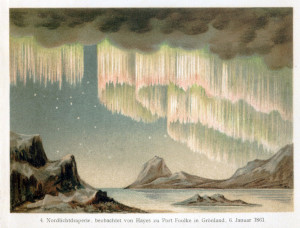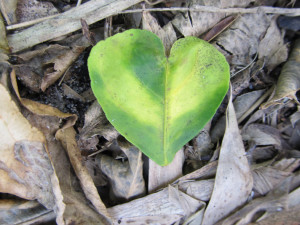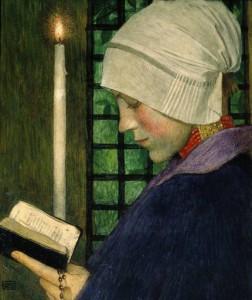Perhaps you heard the National Public Radio story not long ago about Ittoqqortoormiit, a small town in Greenland, experiencing its first sunrise in 58 days. That was on January 20th and daylight there that day, after 58 days of continuous darkness, lasted for 1 hour, 5 minutes and 20 seconds. Here we are today at the First of February, and already daylight in Ittoqqortoormiit has increased to nearly 4 hours and 35 minutes. That’s a pretty dramatic shift in 12 days, but this is life at the Arctic Circle: a bit more extreme than the temperate world. What is tremendously apparent in Ittoqqortoormiit these days is that winter is waning: spring is on its way.
Most of us do not live in the Arctic Circle, however, and as we head further south toward the equator, the shift in hours of daylight and the shift toward spring is less apparent and less dramatic. But rest assured it is happening. The Earth continues to shift in its seat and the wheel of the year remains in constant motion. Today, the First of February, we reach another spoke in that wheel: we are now about halfway between the Midwinter Solstice of December and the Spring Equinox of March, and tonight brings Imbolc, a holiday of the Celtic calendar.
The red letter days that mark this time are varied and fascinating. There is Candlemas tomorrow, and also Groundhog Day. Of the two, most Americans are at least familiar with the latter, while Candlemas is one that many have never heard of. There is an old, old tradition that has Christmastime ending at Candlemas, and for those who follow these old ways, Candlemas is the day that the Christmas greenery must come down. To have the Yuletide decorations up longer than Candlemas is to risk bringing bad luck upon the home.
But Candlemas and Groundhog Day are tomorrow. Now it is Imbolc––the start of spring by traditional reckoning of time in the Northern Hemisphere––and it is St. Brigid’s Day. Both are sacred to Ireland: Imbolc goes back to the country’s Celtic roots, and St. Brigid’s Day is second in stature in Ireland only to St. Patrick’s Day. At this cross quarter day, this midpoint between solstice and equinox, we are at the very start of springtime. It’s a bit perplexing and yet highly sensible when you sit and ponder it, and perhaps it helps if we think of the spring season and compare it to one lunar cycle. At this halfway point between solstice and equinox, you might think of this start of spring as the time of the new moon, a faint sliver of moon emerging out of the dark of night. Reaching the equinox in March is like the full moon… the height of spring. And as we head past the equinox and toward the next cross quarter day in May (Beltane), with spring drawing to a close and passing away to summer, it is like the waning moon.
All of these things we celebrate these two days are related. Imbolc is the old celebration of the return of spring. With Imbolc, the earth goddess, ever changing, shifts once again from the old crone of winter to the young maiden of spring. The word is derived from the Gaelic oimelc (ewe’s milk) for as the milk begins to flow for newborn lambs at this time of year, so soon will frozen streams and rivers begin to melt and flow, and so soon will green––and warmth––return. The Church early on christianized the goddess and gave the day to St. Brigid (or Brigit, your choice, though Brigid, with its Celtic pronunciation (brigg-id or bree-id) is more proper). Brigid, a bridge from winter to spring. The night of St. Brigid’s Day brings Candlemas Eve. Candlemas is the day of blessing candles in the Church, forty days past Christmas. It is also known as Purification Day, which comes out of an old Jewish tradition: forty days after the birth of a son, mothers would go to the temple to be purified. And so the story goes that forty days after the birth of Jesus, Mary went to the temple to be purified. You might think of it as renewal. Which brings us back again to the renewal of the goddess and Imbolc.
As for Groundhog Day, it is just one of many traditions that come out of Candlemas as a day for forecasting the weather. In our home, Candlemas will be the day we ceremoniously haul out the Christmas tree. We don’t typically leave it up this long, but our tree this year has been so beautiful, and it has been drinking water all this time, and Haden the Convivio Shop Cat has loved sleeping under it and running under its lower branches. The tree has, in its way, been instructing us to follow the old ways and so this year we have. Tomorrow night, though, we will bring it out and set it in its quiet corner of the garden where it will sit and rest until next winter solstice, when it will fuel our fire to once again drive the cold winter away and bring light to the darkness. Therein lies some powerful magic.
But now, light is returning. It is traditional for St. Brigid’s Day to fashion a St. Brigid’s Cross out of rushes or reeds, as well as to leave an oat cake and butter on a windowsill in your home. This, to encourage Brigid to visit your home and bless all who live there. And so we welcome Brigid, and so we welcome spring, and so we welcome back the sun, we welcome back our dear friend.
Image: Detail from “Polarlichter I,” a chromolithograph of the Northern Lights from Meyers Konversations-Lexikon, 6th ed., vol. 16, circa 1908. [Public domain] via Wikimedia Commons.


